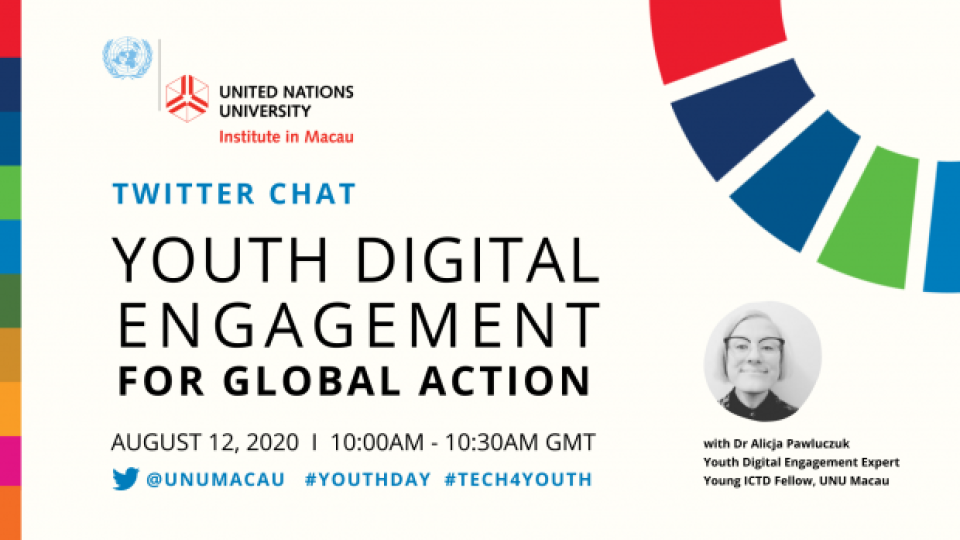In the last two decades, young people’s voices have become increasingly visible in the digital world. In many cases, youth digital engagement has led to real-world changes in the socio-political sphere. From localized actions against social injustice to a global movement against climate crisis - young people have used digital technologies as tools to drive social change and the achievement of the Sustainable Development Goals (SDGs). However, not all young people have equally benefited from the digital progress. In many parts of the world, issues linked to the lack of connectivity, device access, and digital literacy education have become particularly persistent among some of the most disadvantaged youth (e.g. migrants, refugees, indigenous peoples). We also must not ignore problems related to young people’s privacy and online safety. During this difficult time of COVID-19, inequalities related to young people’s digital access and their digital skills have become particularly visible.
With the next generation's future at stake, how do we even begin to examine the complexities behind young people’s digital engagement - now and post-COVID19? To celebrate International Youth Day and highlight the importance of youth’s participation in the digital economy, the United Nations University Institute in Macau (UNU Macau) hosted a #YouthDay #Tech4Youth Twitter chat to further co-investigate this topic.

While it is difficult to fully address all of the points raised during the event, the outcomes of our global conversation on “Youth Digital Engagement for Global Action”, can be broadly summarized into three main recommendation areas:
(1) Listen to and co-create with young people
Young people should be considered as experts of their own lives and aspirations. To create sustainable youth digital engagement, it is essential to try to understand young people’s needs and their unique experiences (both offline and online). To ensure that youth digital engagement is truly youth-led, meaningful participation should take place at all stages of the engagement process (e.g. planning, implementation, evaluation) – only then we can ensure that the process is grounded in young people’s local experiences and can thus lead to positive and sustainable global development.
(2) Consider and address issues related to digital exclusion
For youth digital engagement to be effective in the context of global development, it needs to reach and meaningfully engage all young people. It is crucial to focus on some of the most marginalized youth and ensure that their voices are heard and incorporated into the SDGs’ implementation process. To achieve this, it is important to examine the difficulties young people face when accessing digital technologies and internet connection as well as address these issues to bridge the digital divide.
(3) Support young people’s digital and data literacies
Youth digital engagement takes place within a pre-designed digital system. Whether it is a social media network or an online chat platform, these digital technologies are not power neutral and therefore present a set of technical and ethical challenges for young people. To be able to proactively and critically engage with the digital technologies, young people need to be provided with good equality education which covers both functional digital skills (e.g. sending emails) as well as critical data literacy (e.g. understanding how personal data is being used by third parties).
Suggested citation: Alicja Pawluczuk., "Youth Digital Engagement for Global Action: Insights and the Way Forward," UNU Macau (blog), 2020-08-20, https://unu.edu/macau/blog-post/youth-digital-engagement-global-action-insights-and-way-forward.


